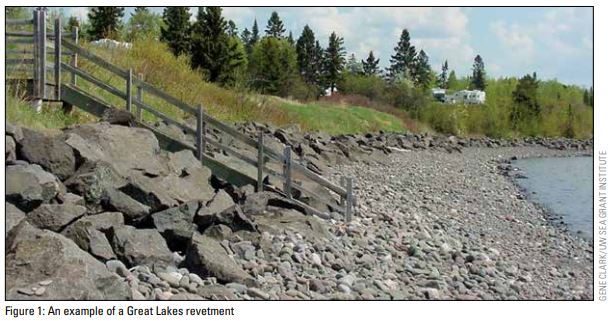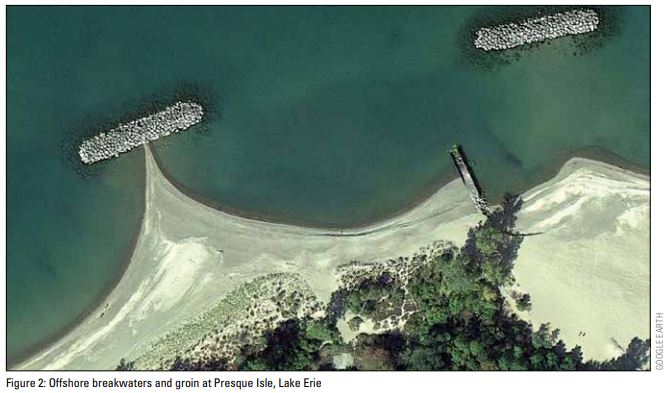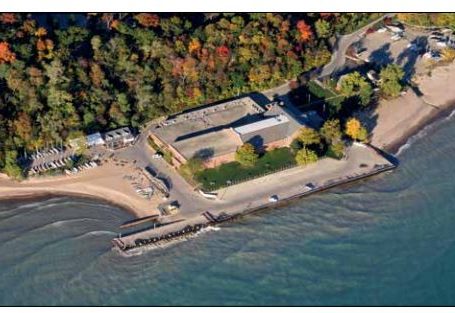November 2019
Great Lakes Coastal Shore Protection Structures & Their Effects on Coastal Processes
Great Lakes Coastal Protection Structures & Their Effects on Coastal Processes is a five-page fact sheet that discusses the different types of shore protection and their positive and negative impacts on coastal processes. Much of the Great Lakes shorelines, ports, harbors and marinas are protected from storms, waves, ice and high-water level damage by engineered coastal and offshore protection structures. During this period of high water levels, coastal property owners and communities are considering installing shore protection structures. This fact sheet first introduces coastal processes, such as erosion, and then considers what engineered structures may be appropriate for different needs. The fact sheet also includes discussion about how engineered structures might influence the shoreline and why monitoring a site before and after a structure is installed is important. This decision support tool was developed by the University of Wisconsin Sea Grant Institute and SmithgroupJJR and is available to download for free on the University of Wisconsin Sea Grant Institute & Water Resources Institute website.
Audience
This document is written for a broad audience that could include engineers and contractors as well as community leaders, coastal managers, or coastal property owners. This big-picture view of coastal processes and shore protection structures allows users to build a basic understanding of the different options available for protecting a shoreline and what some key consideration may be when exploring shoreline protection options.
Decision Support
This fact sheet is divided into five sections: a description of Great Lakes coastal processes, shore parallel structures, shore perpendicular structures, offshore structures, and monitoring and modeling. The information provided in this document is intended to help users develop an understanding of Great Lakes coastal processes and how coastal structures can impact coastal processes so that they can make informed decisions when choosing an engineered solution.









